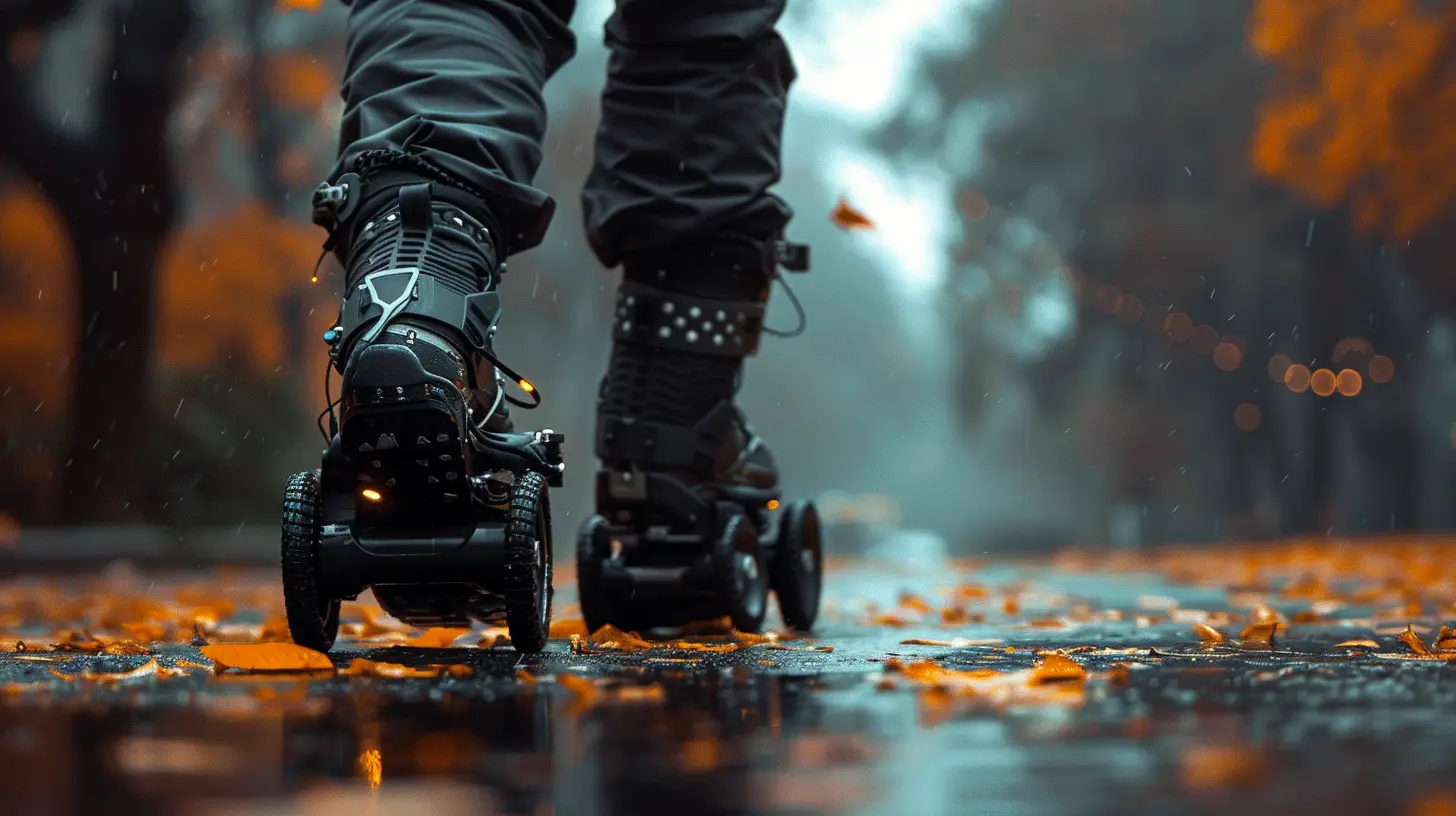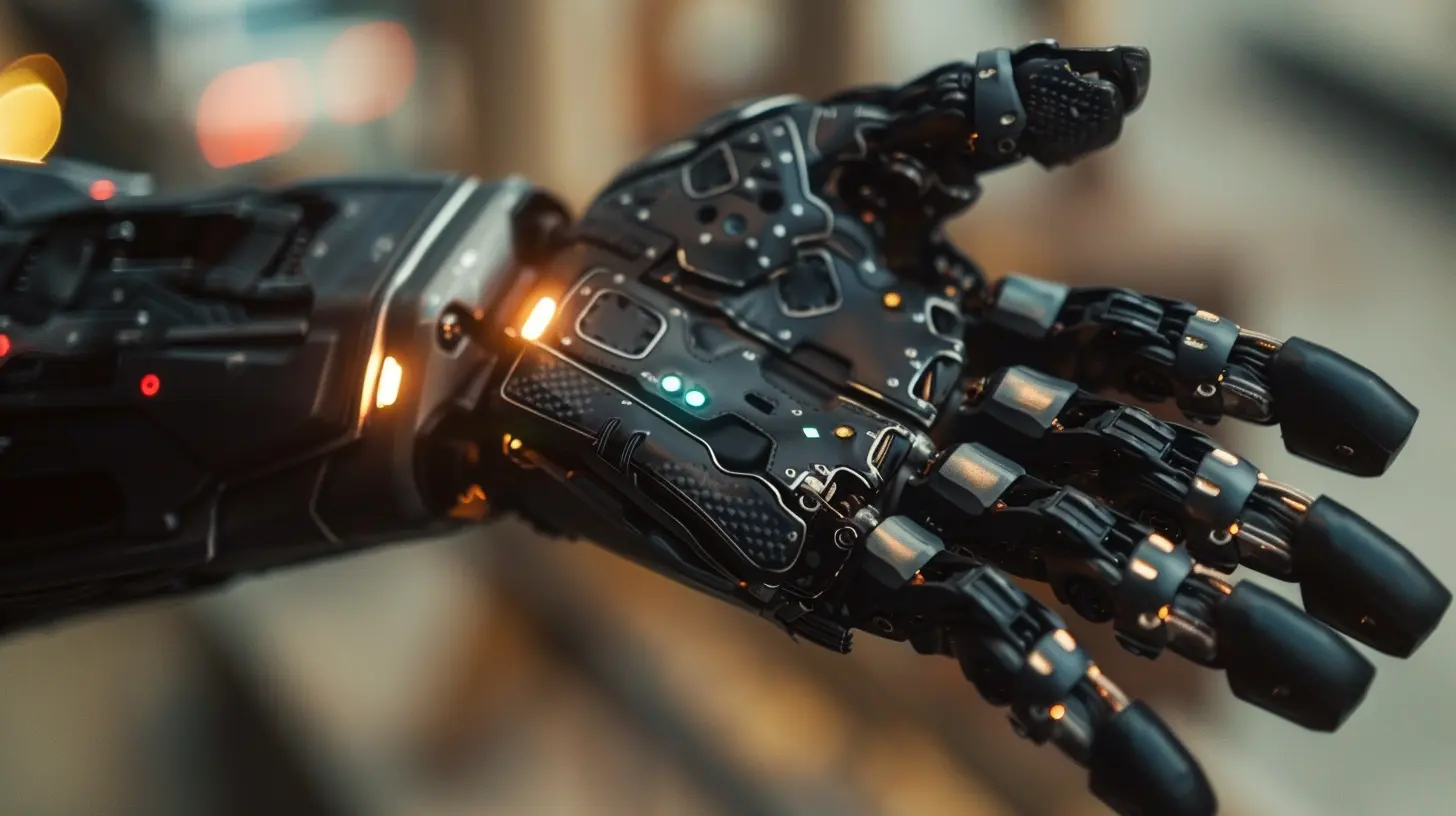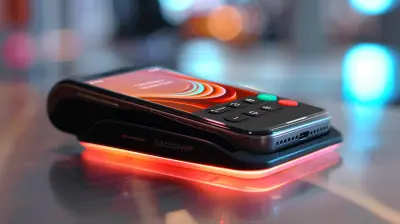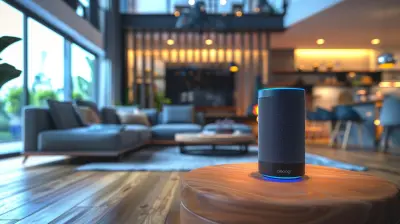How Wearable Tech Is Empowering People with Disabilities
15 January 2025
In recent years, wearable technology has come a long way from just being fancy fitness trackers or smartwatches. It's now playing an increasingly significant role in improving the lives of people with disabilities. These small, but mighty, gadgets are not just about convenience anymore; they’re becoming life-changing tools. From helping people with visual impairments navigate the world, to giving those with mobility issues a newfound sense of freedom—wearable tech is breaking boundaries and empowering individuals in ways we couldn’t have dreamed of just a few years ago.
In this article, we’ll dive deep into how wearable technology is making life easier, more independent, and more inclusive for people with disabilities.

What Exactly Is Wearable Tech?
Before we get into the nitty-gritty, let’s break down what wearable tech actually is. Wearable technology refers to electronic devices that are worn on the body, either as accessories like watches and glasses, or embedded in clothing. They often have sensors that track your body’s activities, monitor health, or assist with mobility and communication.Think about it—smartwatches that keep track of your heart rate, fitness trackers reminding you to move, or even glasses that can help a person with visual impairments "see" the world around them. Now that’s some next-level innovation, right?

The Role of Wearable Tech in Empowering People with Disabilities
Let’s be honest: living with a disability can bring unique challenges. Whether it’s mobility issues, hearing impairments, or cognitive disabilities, daily tasks that many of us take for granted can become major hurdles. Here’s where wearable tech swoops in like a superhero, helping people with disabilities not just survive but thrive.1. Enhancing Mobility
People who face mobility challenges—whether from paralysis, amputation, or a condition like multiple sclerosis—often struggle with getting around independently. But guess what? Wearable tech is swooping in to save the day.Exoskeletons
Yep, you heard that right. Exoskeletons aren’t just for sci-fi movies anymore. These robotic suits are helping individuals with mobility impairments walk again. Imagine putting on a sleek, robotic frame that supports your body and helps you move. It’s like turning into Iron Man, except instead of fighting bad guys, you’re fighting the limitations of your body.Exoskeletons have sensors that detect your intentions to move and assist accordingly. They’re especially valuable for people recovering from a stroke or spinal cord injuries. While exoskeletons are still in the early stages of development and can be pricey, they hold massive potential for the future.
Smart Shoes and Insoles
Believe it or not, even your shoes can become a tech gadget! Smart shoes and insoles are designed to help people with mobility issues by monitoring their walking patterns and alerting them to any imbalances that could lead to a fall. For individuals with conditions like Parkinson’s, where balance can be an issue, these wearables are game-changers in preventing accidents and maintaining independence.2. Aiding the Visually Impaired
For people with visual impairments, navigating the world can feel like walking through a maze blindfolded. Wearable tech is helping to change that narrative.Smart Glasses
Imagine wearing a pair of glasses that can "see" for you. Smart glasses use a combination of cameras, sensors, and artificial intelligence to describe the environment to the user. Some can even read out text, identify objects, or recognize faces. Companies like OrCam have developed glasses that can read text aloud, helping visually impaired individuals read books, menus, or even signs in public spaces.Haptic Feedback Devices
Haptic feedback is a fancy way of saying "touch-based communication." Devices that use haptic feedback can help visually impaired individuals navigate their surroundings by sending vibrations or taps to guide them. Think of it as a more advanced version of a cane, letting users know when they're approaching obstacles or providing directions without needing to rely on auditory cues.3. Improving Hearing and Communication
For people with hearing impairments, communication can often be a challenge, especially in loud environments or when trying to understand speech from a distance. Fortunately, wearable tech is stepping up to the plate.Smart Hearing Aids
Hearing aids have come a long way from those bulky, not-so-cool devices of the past. Today’s smart hearing aids are sleek and packed with tech. They not only amplify sound but can also filter out background noise, making it easier to focus on conversations. Some even connect to smartphones, allowing users to stream music, take calls, and adjust settings with ease.Speech-to-Text Wearables
Imagine wearing a device that instantly converts spoken words into text. For people who are deaf or hard of hearing, such devices can be invaluable in conversations, meetings, or even while watching TV. These wearables use voice recognition technology to provide real-time captions, making communication more accessible and less frustrating.4. Assisting Cognitive Disabilities
Wearable tech isn’t just about physical impairments—it can also help people with cognitive disabilities, like autism or Alzheimer’s, navigate their world more comfortably.GPS Wearables for Safety
For individuals with cognitive impairments who may wander or get lost, GPS-enabled wearables are a literal lifesaver. These devices can be worn on the wrist or as a pendant and track the wearer’s location in real-time. Caregivers can receive alerts if the individual leaves a predetermined "safe zone," allowing for quick intervention if needed.Smartwatches for Task Management
People with cognitive disabilities may struggle with remembering daily tasks or appointments. Smartwatches can help by setting reminders and offering visual cues for what’s next on the schedule. This helps promote independence, as users can rely on their wearable to guide them through their day.5. Promoting Mental Health and Well-being
Mental health is as important as physical health, and wearable tech is recognizing that. While mental health challenges can affect anyone, they often disproportionately impact individuals with disabilities. Wearable devices are starting to focus on well-being, helping users manage stress, anxiety, and depression.Mood Trackers
Mood tracking wearables monitor physiological indicators like heart rate, skin temperature, and sleep patterns to detect stress or anxiety levels. These devices can alert users when they’re in need of a mental health break or offer calming exercises like guided breathing techniques.Virtual Reality (VR) for Therapy
While not exactly wearable tech in the traditional sense, VR headsets are becoming a useful tool in mental health therapy. By immersing users in calming, controlled environments, VR can help individuals practice coping mechanisms for anxiety, PTSD, or stress. It’s like taking your brain on a mini vacation without ever leaving your living room.
The Future Is Bright for Wearable Tech and Disabilities
While wearable technology has already made huge strides in empowering people with disabilities, the future holds even more promise. As technology continues to evolve, we can expect wearables to become more affordable, accessible, and personalized.Imagine a world where wearable tech is so integrated into daily life that it seamlessly assists individuals with disabilities without them even needing to think about it. We’re already seeing inklings of this future with developments in artificial intelligence, machine learning, and bioengineering. Eye-tracking devices, brain-computer interfaces, and even smart clothing are all on the horizon, promising to push the boundaries of what wearables can do.

Challenges and Limitations
Of course, no technology is perfect. There are still challenges to overcome. Many wearable devices are expensive, making them inaccessible to the people who need them most. Battery life can also be an issue—after all, what good is a life-changing device if it dies halfway through your day?Moreover, there’s the issue of social stigma. Some people may feel self-conscious about wearing visible tech. It’s important for manufacturers to focus on making these devices not just functional, but also stylish and discreet, so users feel confident wearing them out and about.
Lastly, there’s the question of data privacy. Many wearables collect sensitive information about the user’s health and habits. While this data can be incredibly useful, it also poses risks if it falls into the wrong hands. Companies will need to prioritize security and privacy as these devices become more widespread.
Conclusion: Wearable Tech Is Changing Lives
Wearable technology is no longer just about counting steps or reading texts on your wrist. It’s becoming a powerful tool that’s helping people with disabilities lead more independent, fulfilling lives. Whether it’s helping someone walk again, navigate the world more easily, or communicate better—wearable tech is proving that it can be a genuine game-changer.The future of wearable tech looks incredibly bright, and as it continues to evolve, it will undoubtedly play an even bigger role in empowering people with disabilities. So, the next time you strap on your smartwatch or pop in your wireless earbuds, remember—what’s a simple convenience for some could be a life-altering device for others.
all images in this post were generated using AI tools
Category:
Wearable TechAuthor:

John Peterson
Discussion
rate this article
18 comments
Zailyn Long
Wearable tech significantly enhances accessibility, enabling individuals with disabilities to lead more independent and empowered lives.
February 9, 2025 at 4:19 AM

John Peterson
Thank you for your insightful comment! I completely agree—wearable tech is a game changer for enhancing independence and empowerment for individuals with disabilities.
Aaron McInerney
Wearable tech is revolutionizing the lives of individuals with disabilities, breaking barriers and enhancing independence. These innovative tools empower users, enabling them to reclaim control over their lives. As technology continues to advance, we witness a brighter, more inclusive future for all. Let’s embrace this transformative journey!
January 30, 2025 at 8:04 PM

John Peterson
Thank you for highlighting the transformative impact of wearable tech! It truly enhances independence and fosters inclusivity for individuals with disabilities. Together, we can embrace this positive change!
Shiloh Yates
Empowering advancements! Truly inspiring how tech enhances lives!
January 26, 2025 at 5:57 AM

John Peterson
Thank you! I'm glad you found it inspiring—wearable tech truly has the potential to transform lives!
Garrett Whitaker
This article brilliantly highlights how wearable tech enhances independence and quality of life for individuals with disabilities. Truly inspiring advancements!
January 25, 2025 at 7:29 PM

John Peterson
Thank you for your kind words! I'm glad you found the article inspiring and insightful.
Melanie Conrad
Wearable tech is revolutionizing accessibility, providing individuals with disabilities greater autonomy and confidence. These innovations not only enhance daily living but also foster inclusion, proving that technology can truly empower every individual.
January 25, 2025 at 4:17 AM

John Peterson
Thank you for your insightful comment! I completely agree—wearable tech plays a crucial role in enhancing autonomy and fostering inclusion for individuals with disabilities. It's inspiring to see how these innovations are making a real impact.
Colt McDougal
Empowering innovation in wearable tech paves the way for inclusion and independence for all. Truly inspiring!
January 23, 2025 at 7:18 PM

John Peterson
Thank you! I'm glad you found it inspiring. Wearable tech truly has the potential to transform lives by promoting inclusion and independence for everyone.
Nora McFee
Great insights on assistive tech's impact!
January 23, 2025 at 12:47 PM

John Peterson
Thank you! I'm glad you found the insights valuable.
Sabrina Erickson
Great article! It's inspiring to see how wearable tech is breaking barriers and enhancing independence for people with disabilities. These advancements truly highlight the power of innovation in improving lives!
January 22, 2025 at 12:53 PM

John Peterson
Thank you for your kind words! I'm glad you found the article inspiring and insightful. Wearable tech truly is a game-changer for enhancing independence!
Inez Kirk
Inspiring advancements for empowerment and inclusion!
January 22, 2025 at 5:15 AM

John Peterson
Thank you! We're excited to highlight how wearable tech is making a real difference in enhancing empowerment and inclusion for people with disabilities.
James Whitaker
Empowering, innovative solutions for everyone’s needs.
January 21, 2025 at 9:29 PM

John Peterson
Thank you! Wearable tech truly transforms lives by offering tailored solutions that enhance independence and accessibility for individuals with disabilities.
Isaac Newman
Who knew tech could be this cool? Wearable gadgets are like superhero capes for everyone, proving that with a little bit of innovation, we can all be the Avengers of our own lives—minus the spandex, hopefully!
January 21, 2025 at 11:29 AM

John Peterson
Absolutely! Wearable tech truly acts as a powerful tool for empowerment, enhancing independence and enabling everyone to be their own hero.
Landon Wright
Wearable tech enhances accessibility for people with disabilities, offering personalized solutions that improve independence, communication, and overall quality of life.
January 20, 2025 at 5:39 AM

John Peterson
Absolutely! Wearable tech plays a crucial role in empowering individuals with disabilities by providing tailored tools that enhance their independence and quality of life.
Nathaniel Barron
Empowering innovation brings independence and enhances lives for many!
January 19, 2025 at 3:53 AM

John Peterson
Absolutely! Wearable tech truly transforms lives by fostering independence and enabling individuals with disabilities to lead more empowered, fulfilling lives.
Serenity McCoy
This article highlights the transformative role of wearable tech in enhancing accessibility for individuals with disabilities. By merging innovation with inclusivity, these devices not only improve daily living but also foster independence and empowerment in diverse communities.
January 18, 2025 at 9:16 PM

John Peterson
Thank you for your insightful comment! I'm glad you found the article highlights on how wearable tech fosters independence and empowerment for individuals with disabilities compelling.
Gideon Dodson
Empowering individuals with disabilities through wearable tech showcases the incredible potential of innovation. These advancements not only enhance daily living but also inspire a future where everyone can thrive and embrace their unique abilities!
January 18, 2025 at 5:28 AM

John Peterson
Thank you for your insightful comment! Indeed, wearable tech holds transformative potential for individuals with disabilities, fostering independence and celebrating unique abilities.
Alice McGhee
Thank you for highlighting the transformative impact of wearable tech for individuals with disabilities. It's heartening to see how innovation can enhance independence and improve quality of life. Every step toward inclusivity inspires hope and empowers countless lives. Keep up the great work!
January 17, 2025 at 9:32 PM

John Peterson
Thank you so much for your kind words! I'm glad to hear that you find the impact of wearable tech inspiring. Together, we can continue to promote inclusivity and empower lives.
Seraphis McIntosh
Empowering individuals with disabilities through wearable tech is a game changer! These innovations are not just gadgets; they’re lifelines that enhance independence and redefine capabilities. As we move forward, let’s celebrate the fusion of compassion and technology—because everyone deserves the right to thrive, one wearable at a time!
January 17, 2025 at 12:10 PM

John Peterson
Thank you for your insightful comment! I completely agree that wearable tech is transforming lives and promoting independence for individuals with disabilities. It's exciting to see the positive impact of compassion-driven innovation!
Soren Matthews
Wearable tech is revolutionizing accessibility for individuals with disabilities, offering innovative solutions like smart prosthetics and adaptive devices. These advancements enhance independence, communication, and quality of life, showcasing the transformative power of technology in inclusivity.
January 15, 2025 at 7:34 PM

John Peterson
Thank you for highlighting the significant impact of wearable tech on accessibility! You're absolutely right—these innovations are crucial in enhancing independence and improving quality of life for individuals with disabilities.
MORE POSTS

The Future of Contactless Payments: What to Expect

Smart Home Automation Ideas You Haven’t Tried Yet

Reviewing the Top Noise-Cancelling Over-Ear Headphones for Commuters

Testing the Best Drones for Aerial Photography and Fun

The Threat of Cyber Espionage: When Hackers Become Spies

The Impact of Cryptocurrency on Cross-Border Payments

The Impact of Self-Driving Cars on Public Transportation

Smart Home Integration: How to Sync Your Entertainment System with Alexa or Google Home

The Future of Big Data in Predictive Analytics

How 5G is Accelerating the Development of Autonomous Vehicles

How Nanotechnology is Shaping the Future of Batteries